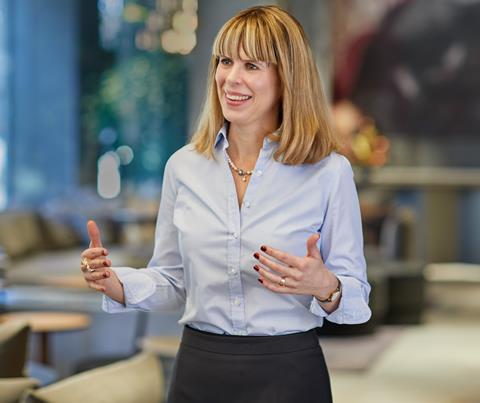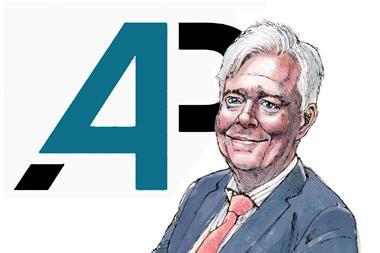Sweden’s AP1, the third of the country’s big-four buffer funds behind the main component of the state pension, this morning reported an -8.6% loss on investments for last year, and its leader said it was vital for long-term investors to avoid being too tactical.
Releasing its annual report today, AP1 said the -8.6% annual return – the largest loss out of the three funds who have so far reported 2022 results – corresponded to net investment income of -SEK39.9bn (€3.61bn).
Assets under management diminished to SEK421.2bn by the end of December from SEK465.8bn a year earlier, after the investment loss and SEK4.7bn having been transferred out of the fund into the income pension system in 2022, the figures showed.
Kristin Magnusson Bernard, AP1’s chief executive officer, said her team had taken both short-term and long-term actions to protect the portfolio.
“We have pro-actively changed our positions based on changing market conditions, for instance by lowering equity exposure and reducing the duration of the fixed-income portfolio,” she said.
AP1 said its portfolio of alternative investments, which includes property, infrastructure and private equity funds, made a positive return in 2022, but fixed income and equity made losses.
Magnusson Bernard told IPE in an interview today that after markets started 2023 on quite a positive note, and then lost some of that optimism, she expected to see more such back-and-forth movements during most of the current year.
Market analysts were now expecting to see prices bottom in the second half of the year, the CEO said.
“They keep pushing the equity market bottom forward and that’s mainly on the strength of the US economy which then has implications for the European market and the UK and Sweden.

“But currently we’re very much in this wait-and-see mode which I think is actually the worst for many investors because you have all these outlooks out there and there’s very little data to show whether we are going in this way or that,” she said.
Asked about tactics AP1 might employ in this market situation, Magnusson Bernard said: “Part of what was successful last year and which I think will also be this year is really liquidity management – how you handle the portfolio, your collateral management,” she said.
“And we do repos, reverse repos, all of that – how you manage the fluctuations in the portfolio to avoid any forced selling, for example,” she said.
Referring to the LDI crisis in the UK last autumn when pension funds lost money after having to sell bonds for cash in a rapidly-falling market, the AP1 CEO said one of the keys to success for investors with large derivatives books was to avoid that sort of situation.
“And that’s one of the keys that really has nothing to do with how you read the market in terms of direction – it’s really the craft, and a good craft creates a great result in this type of environment,” she said.
Regarding tactics though, Magnusson Bernard said: “The key challenge if you’re a long-term investor in this kind of market, is that you could become too tactical.
“To create returns six months hence, you might have to live with a negative result today, and to be able to handle that behaviourally, psychologically, is actually one of the most difficult things,” she added.
“We really try to encourage one another to say: Do I have new information today which makes me feel differently about the world in six months?
“Because that’s what I should act on, not the day-to day fluctuations, so that’s more of the protective part, and then you try to combine that with the strategic side,” she said.
AP3 5.8% in the red after 2022 – year when it phased out emerging markets
AP3 has reported an investment return of -5.8% for 2022 – a slightly stronger result than the -6.7% reported by fellow national pensions buffer fund AP2 on Friday.
As the second of the largest four buffer funds to publish its annual report, on AP3 said yesterday that total assets had fallen to SEK468.4bn at the end of 2022 from SEK502.3bn, after the loss and disbursements to the pension system of SEK4.7bn.
Staffan Hansén, who took over from Kerstin Hessius as the new CEO of the Stockholm-based institution at the end of last October, said: “As an investor, we are always affected by major global movements in the financial markets, but given the general performance of markets over the year, the return should be regarded as reasonable.”
In the annual report, Hansén said that in the wake of Russia’s invasion of Ukraine, the question came up at AP3 of whether to have a more active stance towards countries it wanted to invest in.
“During the autumn we phased out investments in emerging markets and in 2023 we will define an analysis model for political risks,” the CEO said.
“After that, we plan to resume investments in emerging countries based on our analysis,” Hansén said, adding that this work could be summarised as AP3 tackling the issue of governance within ESG.
AP3 said its alternative investments had returned 8.9% in 2022, mainly due to investments in infrastructure and timberland.
However, equity investment resulted in a -18.0% return, and fixed income investments returned -8.3% during the year, the fund reported.
AP4 is due to release its annual report for 2022 tomorrow.
To read the digital edition of IPE’s latest magazine click here









































No comments yet